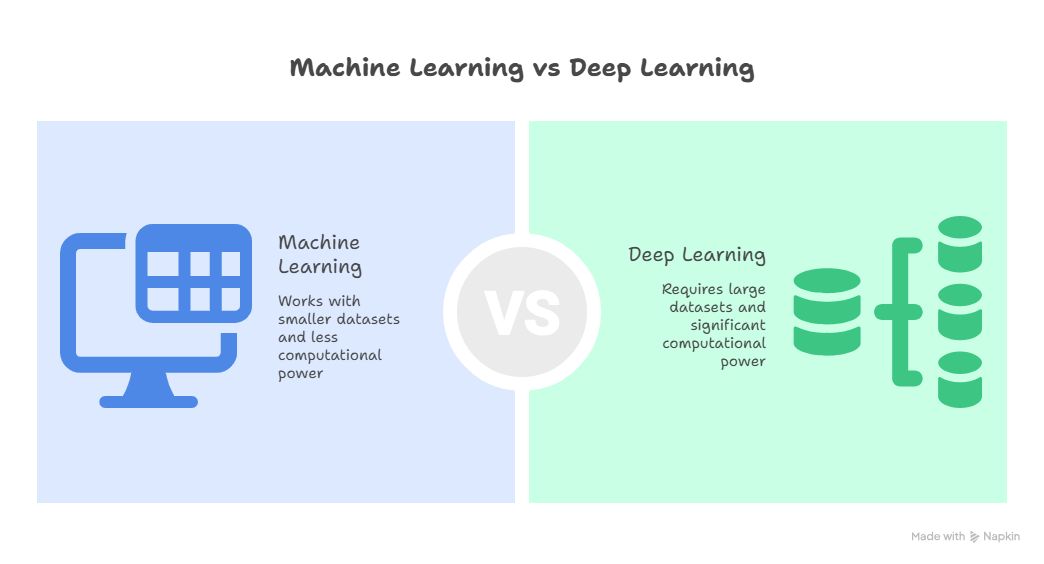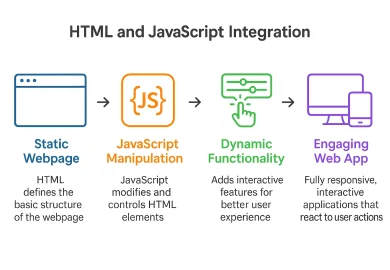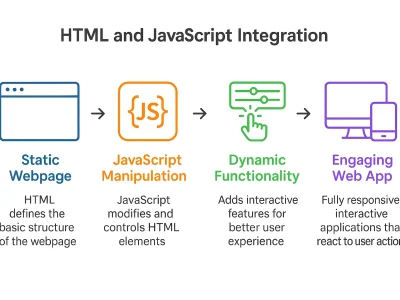The emergence of Artificial Intelligence (AI) in recent years has transformed the technological landscape, with far-reaching impacts across various sectors, including the medical field, as well as Fintech and entertainment/ retail industries. In this broad area, two large clusters are often mentioned: Machine Learning (ML) and Deep Learning (DL). Although both are crucial in developing intelligent systems, they are remarkably different in their structure, functionality, and application. This blog brings a comparative report between Machine Learning vs Deep Learning in a way that defines their most basic definition, differences, applications, and future possibilities in the AI ecosystem.
Defining Machine Learning
Machine Learning is a sub-branch of AI that allows systems to learn and enhance their capabilities through data, without the need for pre-programming. It is data-driven, based on patterns and conclusions rather than pre-programmed information. It is worth examining the development of these technologies briefly before moving on to their contemporary uses. The concept of Machine Learning can be traced back to the 1950s, when Arthur Samuel created a chess program that, over time, improved its performance. The term itself was coined in 1959. In the initial models, linear regression and decision trees were used. The increased computational performance and the availability of larger datasets over time have led to ML being used in more everyday applications. A subset of Deep Learning, it exploded in the 2010s due to the invention of new deep neural architectures, the commercialization of GPUs, and large datasets such as ImageNet, allowing the realization of practical Deep Learning in vision and language.
Types of Machine Learning
- Supervised Learning: This is where a model is trained using some labelled data. For example, house price prediction is based on features such as the location, size, and age of the house.
- Unsupervised Learning: Represents unlabelled data to recognise trends or groupings. The common use is clustering of customer data for target marketing.
- Reinforcement Learning: It centres on learning via experimentation where the model gets either rewards or penalties depending on what it does. It is applied in robotics and playing games.
Applications of Machine Learning
- Email Spam Detection: Blocks unwanted emails using learned features.
- Recommendation Engines: ML is used by platforms such as Netflix and Amazon to recommend content or products.
- Fraud Detection: Banks use ML to detect fraudulent payments.
- Customer Segmentation: Business firms employ clustering algorithms to segment customers depending on behaviour.
Key Characteristics
Structured data are usually suitably used with Machine Learning models. These models require data scientists to manually select and tune the features. although the duration of the training time is rather brief, ML solutions require significant human effort during the development and optimization processes.
Understanding Deep Learning
As a branch of Machine Learning, Deep Learning is more narrowly concerned with multi-layered neural networks-thus the term deep. These artificial neural networks replicate the structure of the human brain to run through huge amounts of data and learn deep, complex patterns with little to no human supervision. Deep learning works by utilising artificial neural networks for learning from data. Neural networks are made up of layers of interconnected nodes, and each node is liable for learning a particular feature of the data.
How It Works
Deep Learning models are networks of neurons connected and carry out mathematical processing on the inputted data. These networks adapt internal parameters to minimise error in prediction through methods like backpropagation.
Applications of Deep Learning
- Image Recognition: Applications in security systems, social media and medical imaging.
- Natural Language Processing: Drives applications such as virtual assistants, translation services, and chatbots.
- Autonomous Vehicles: Enable making decisions in real-time based on sensor data.
- Medical Diagnosis: Helps diagnose disease using radiology and pathology images.
Key Characteristics
Deep Learning excels with unstructured data, such as images, audio, and video. It is very effective at complicated jobs, and it demands little human interaction to undertake feature engineering. Nevertheless, DL models are computationally heavy, and most of the time, they are used as black-box models. Thu, interpretability is not an easy task.
Key Differences Between Machine Learning vs Deep Learning
The difference between these two approaches becomes more evident through the comparative analysis of various ranges:
1. Data Requirements
- Machine learning asserts itself when used with smaller and highly structured information.
- Deep Learning: Needs quantities of data, usually unstructured, to gain precision.
2. Hardware Requirements
- Machine Learning: Performs well in normal processors.
- Deep Learning: Requires special hardware such as GPUs or TPUs as it involves intricate calculations.
3. Feature Engineering
- Machine Learning: The experts need to manually choose the features.
- Deep Learning: Extraction of features is automated in the training process.
4. Training Time
- Machine Learning: Enables quicker training rounds and is simpler to implement.
- Deep Learning: Complexity necessitates longer training over regular models.
5. Human Intervention
- Machine Learning: Requires continuous tuning and oversight.
- Deep Learning: Operates with minimal human intervention once trained.
6. Interpretability
- Machine Learning: Offers explainable results and model transparency.
- Deep Learning: Often lacks interpretability due to its black-box nature.
7. Accuracy with Data Size
- Machine Learning: Yields reliable results with limited data.
- Deep Learning: Accuracy improves significantly with increased data availability.
8. Problem Complexity
- Machine Learning: Suited for linear, moderately complex tasks.
- Deep Learning: Designed for highly non-linear and abstract problems.
9. Cost and Resources
- Machine Learning: More cost-effective and accessible.
- Deep Learning: Requires significant investment in infrastructure.
10. Output Types
- Machine Learning: Generates categorical or numerical outputs.
- Deep Learning: Capable of generating complex outputs like audio, images, or text.
Use Case Scenarios
Understanding when to choose each approach is essential for optimising performance, cost, and accuracy.
When to Use Machine Learning
- When results must be interpretable
- When the issues involve simple patterns
- When quick deployment is needed
- When data availability is limited
- When budget constraints are present
When to Use Deep Learning
- When the task requires detecting intricate patterns
- When high accuracy is a priority
- When adequate computational resources exist
- When large datasets are available
- When handling image, text, or speech data
Real-World Case Studies
Machine Learning in Practice
- Loan Default Prediction: Banks use ML models to assess credit risk.
- Customer Churn Analysis: Telecommunications companies predict which customers are likely to leave.
- Supply Chain Optimisation: Businesses forecast inventory needs using regression models.
Deep Learning in Practice
- GPT Models: Transformer-based architectures that understand and generate human language.
- ImageNet: A benchmark dataset used to train DL models for image classification.
- Driver Assistance Systems: Vehicles analyse road conditions and take action in real-time.
Learning Path: Getting Started
Machine Learning
- Prerequisites: Statistics, linear algebra, basic programming.
- Languages: Python, R.
- Popular Libraries: Scikit-learn, Pandas, XGBoost.
- Beginner Projects: Predicting student scores, sales forecasting, movie rating predictions.
Deep Learning
- Prerequisites: ML foundations, calculus, linear algebra.
- Frameworks: TensorFlow, Keras, PyTorch
- Hardware: Access to GPUs or cloud-based environments.
- Advanced Projects: Face recognition system, text summarisation, audio transcription.
Career Prospects and Industry Trends
The demand for AI professionals continues to grow. Companies across all sectors are adopting ML and DL to remain competitive. Professionals in this field increasingly need domain-specific knowledge apart from technical expertise. For instance, applying ML in healthcare requires an understanding of medical data standards, while deploying DL in finance may demand familiarity with risk analysis. Soft skills like communication, ethical reasoning, and problem-solving are equally vital to bridge the gap between developers and decision-makers. As businesses integrate AI into operations, roles such as AI Ethicist, AI Product Manager, and AI Solutions Architect are emerging. Continual learning and upskilling through certifications and real-world projects are essential to staying relevant in this fast-paced domain.
Recent advances such as OpenAI’s research demonstrate how Deep Learning powers state-of-the-art language and vision models.
Job Roles
- Machine Learning Engineer
- Data Scientist
- AI Researcher
- Computer Vision Specialist
- Natural Language Processing Engineer
Salary Estimates
- Machine Learning Engineer: ₹8–15 LPA (India); $110K–140K (USA)
- Deep Learning Engineer: ₹12–20+ LPA (India); $130K–170K (USA)
Industry Trends
- Explainable AI (XAI): Aiming to make DL models more transparent.
- Federated Learning: Distributed ML that enhances data privacy.
- Edge AI: Running AI models locally on devices like smartphones and IoT sensors.
- Self-supervised Learning: Reducing dependence on labelled data for DL.
Challenges and Limitations
Both Machine Learning and Deep Learning have their drawbacks and challenges. Without the proper tuning, ML models tend to be overfitted or underfitted. They can also be biased in the case of learning non-representative datasets. Conversely, Deep Learning models are compute- and data-intensive and therefore not accessible by smaller organisations. Additionally, they are not interpretable, and this is critical in such areas as healthcare and financial centres. Issues of ethical nature, such as data privacy and algorithmic bias, a s also arise as they become increasingly implemented in everyday life. There is an urgent need to overcome these constraints to develop credible and non-exclusive artificial intelligence.
Conclusion
Machine Learning and Deep Learning represent two distinct approaches to artificial intelligence. While both are powerful tools, their applications vary depending on the nature of the problem, the data involved, and the resources available. Machine Learning is often preferred for simpler, faster, and more interpretable tasks, while Deep Learning is ideal for solving complex problems that involve vast amounts of unstructured data.
A clear understanding of their differences and capabilities can enable individuals and organisations to make informed decisions, whether developing AI applications or pursuing a career in this dynamic field.





